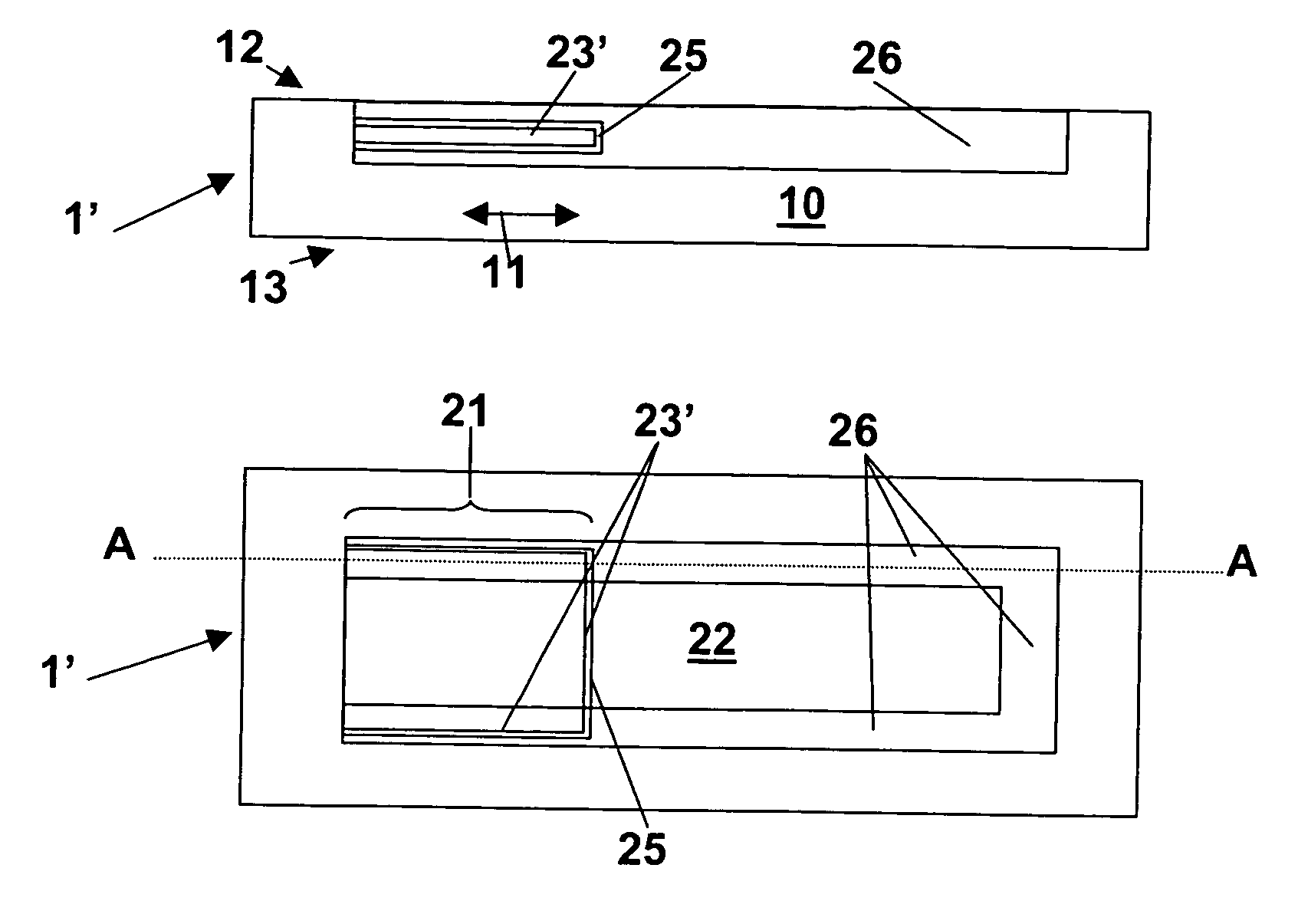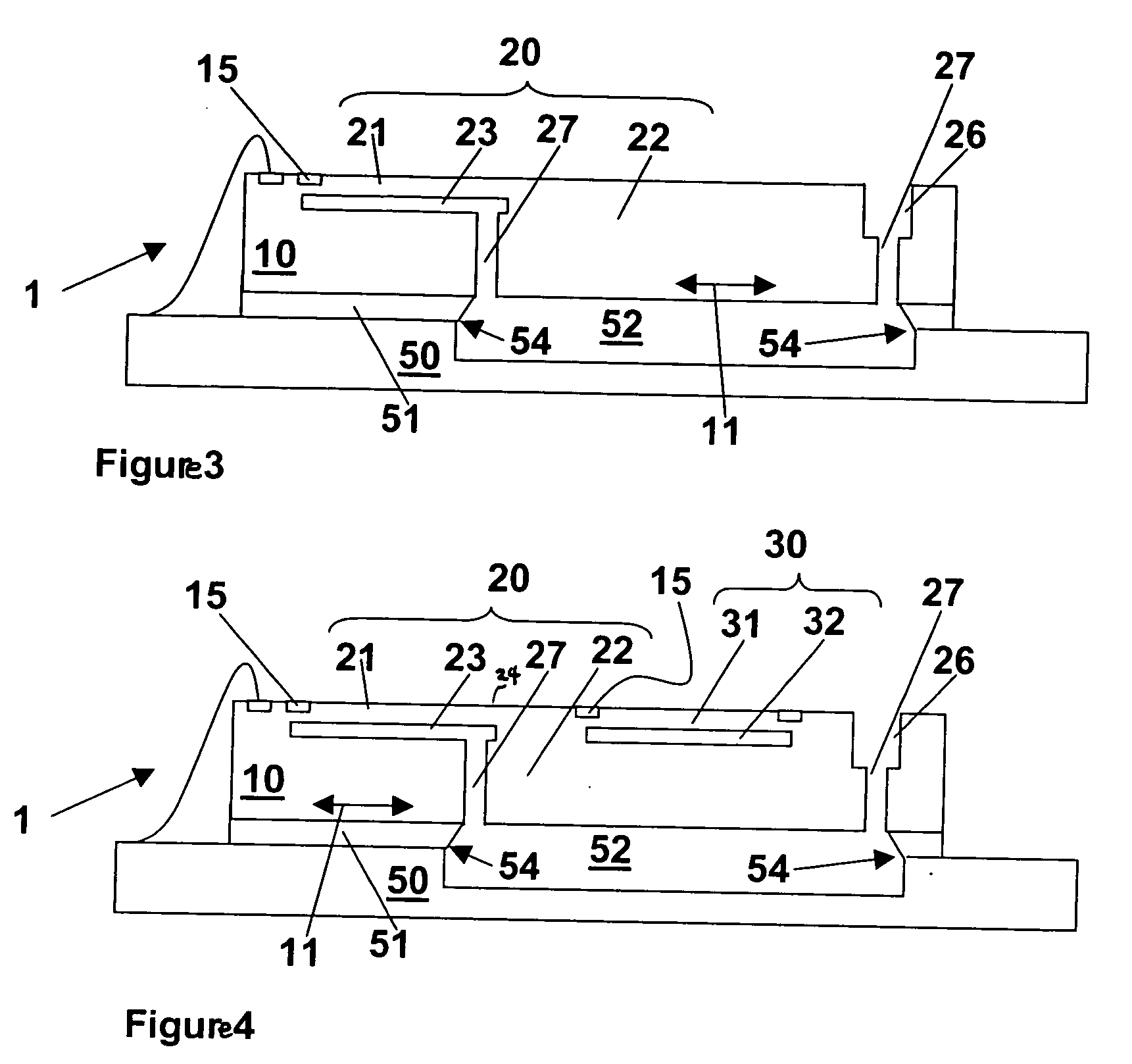Micromechanical device and method for producing a micromechanical device
a micromechanical and micro-mechanical technology, applied in the direction of fluid pressure measurement, acceleration measurement using interia forces, instruments, etc., can solve the problems of not being able to represent on one chip in a monolithically integrated manner, requiring multiple sensors, etc., to achieve cost-effective production, high sensitivity, cost-effective
- Summary
- Abstract
- Description
- Claims
- Application Information
AI Technical Summary
Benefits of technology
Problems solved by technology
Method used
Image
Examples
Embodiment Construction
[0015]FIG. 1 shows a first precursor structure 1′ of the micromechanical device according to the present invention. FIG. 1 shows, in the lower part of FIG. 1, a top view having a sectional line A-A. In the upper part of FIG. 1, a sectional illustration of a section taken along sectional line A-A is shown. On a substrate material 10, which is provided as semiconductor material (e.g., a silicon wafer), and is therefore also designated as semiconductor material 10 in the following, a cavity 23′ is introduced as precursor of a clearance, described in greater detail below, under a spring pattern 21. Cavity 23′ is applied using the method steps of application of doping areas, subsequent porous etching and further subsequent thermal relocation. According to the present invention, semiconductor material 10 is a p-substrate, for instance, and the dopings introduced for the porous etching are negatively doped doping regions. Both the production of porous silicon regions using porous etching a...
PUM
 Login to View More
Login to View More Abstract
Description
Claims
Application Information
 Login to View More
Login to View More - R&D
- Intellectual Property
- Life Sciences
- Materials
- Tech Scout
- Unparalleled Data Quality
- Higher Quality Content
- 60% Fewer Hallucinations
Browse by: Latest US Patents, China's latest patents, Technical Efficacy Thesaurus, Application Domain, Technology Topic, Popular Technical Reports.
© 2025 PatSnap. All rights reserved.Legal|Privacy policy|Modern Slavery Act Transparency Statement|Sitemap|About US| Contact US: help@patsnap.com



